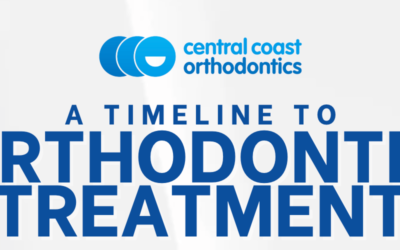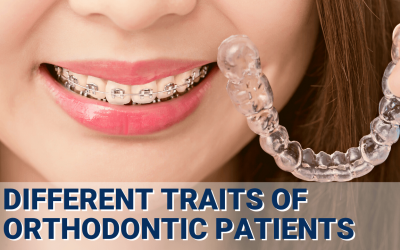The Best 4 Ways to Clean Your Retainer

What You Use to Clean Your Retainer Does Matter
Retainers are made of porous materials that can absorb whatever you use to soak them in or clean them with. As a result, the cleaning product becomes part of the retainer, and it inevitably ends up in your mouth.
I used to recommend effervescent tablets for soaking retainers—that is until I realised that this method can actually be toxic.
Persulfate is a known allergen used in most cleaning tablets—like Polident and Efferdent—that has been shown to cause allergic reactions and other symptoms in users.
In 2008 the FDA issued a warning about the use of cleaning solutions containing persulfate and recommended that users rinse their retainers and dentures thoroughly before inserting them into the mouth.
But as I mentioned, persulfate can leach into porous retainers, making them nearly impossible to rinse completely. It is for this reason, perhaps, that the FDA also suggested that consumers consider persulfate-free alternatives.
Perhaps you’ve considered switching to mouthwash to clean or soak your retainer. Mouthwash is certainly free of persulfate, but it’s still not a good option.
Why?
Most mouthwashes contain alcohol and sodium lauryl sulphate, both of which dry out retainers and your mouth at the same time. And dryness doesn’t just damage your retainer; it also causes bad breath and can lead to cavity formation.
How to Clean Your Retainer the Safe and Natural Way
Now that we’ve discussed the worst ways to clean retainers, let’s look at how to get them fresh and clean without any harmful ingredients.
Before we begin, I should mention that I am often asked how to clean different types of retainers. The good news is that whether you have clear aligners (like Invisalign or Essix), or metal braces, acrylic or ceramic versions, the process for cleaning it is the same.
Cleaning Tips for Any Type of Retainer:
Always keep it moist. Retainers are made for a wet environment, and moving them from your mouth (a wet environment) to the bathroom counter (a dry environment) is a terrible idea that can age your retainer prematurely.
My best advice? Never let your retainer dry out since that is what will cause tartar and biofilm to bond to it. Keep it in your mouth or submerged in liquids.
I suggest filling a with distilled water and some baking soda, or a squirt or two of castile soap. If you’re out of both, just plain distilled waterworks, too.
Using distilled water is important because the minerals in tap water can seed the formation of plaque (also called “calculus”) on your retainers.
Once a week, soak it in white vinegar. Each week, to ensure that your retainer is bacteria-free, soak it in white vinegar for about 15 minutes. Then, rinse and soak in distilled water as usual.
Don’t brush it. Brushing can gouge the material of your retainer, leaving space for bacteria to reside and multiply. Bacteria = dirty, so leave the brush for your teeth and stick to soaking.
Take it to your dentist. If your retainers need to be disinfected, or you feel like it has more buildup than normal, you should take them to your dentist. Your dentist has an ultrasonic cleaner and special cleaning solutions that can disinfect the retainers and remove any buildup without the use of toxic chemicals.
Pro tip: You can also get a great ultrasonic cleaner to keep at home!
The Best Ingredients for Cleaning Your Retainer
As I mentioned previously, the best way to keep your retainer clean and moist is to keep in submerged in a soaking solution when it’s not in your mouth. Plain, distilled water is all you need, but the following tips can ramp up your bacteria-fighting efforts.
How to Clean Your Retainer with Baking Soda
Baking soda is not only the safest way to clean your retainer, but it also does a far better job than the retainer cleansers you will find at the supermarket. Here’s why:
Baking soda keeps bad bacteria at bay.
Baking soda can stabilise the pH of the mouth naturally, which keeps the bacteria that cause problems in the mouth at bay. Typically, the “bad guys” that cause trouble in the mouth thrive in a more acidic environment, and baking soda combats this problem by neutralising the pH of the mouth and rebalancing the oral microbiome. Likewise, baking soda can also disinfect retainers by virtue of its higher pH.
Baking soda can help combat the stink commonly associated with retainers.
Retainers and other dental devices start to smell like rotten fruit after a while, and baking soda is a natural, safe, and effective deodoriser. Used regularly, it will definitely keep the stink away.
I keep a stainless steel parmesan cheese shaker filled with baking soda on my bathroom counter so I can easily add a few shakes to my distilled water container.
How to Clean Your Retainer with Castile Soap
Some people report that after they discontinue the use of dangerous cleaning tablets, they miss the “clean” smell they impart. Fortunately, castile soap is an effective and safe way to achieve that same freshness—simply add a squirt or two of castile soap to the water you soak the retainer in.
The main ingredients of castile soap are olive oil and coconut oil. This means it can do a wonderful job of cleaning and moisturising your retainer without exposing it—or you—to harmful substances like persulfate.
However, castile soap may contain essential oils that have an antibacterial effect in the mouth and, thus, aren’t ideal. Try to avoid these oils, or, at the very least, rinse the retainer thoroughly before putting it back in your mouth.
(Or, you can try the DIY retainer cleaner that I personally use.)
How to Clean Your Retainer with White Vinegar
Using white vinegar as a 15-minute soak once a week or so will keep your retainer clean and disinfected. Make sure to thoroughly rinse your retainer, whether metal, acrylic ceramic braces or clear aligners, after the vinegar soak, and then place it in a stainless steel container with distilled water.
How to Clean Your Retainer with a UV Sanitiser
My answer to this question is, “You shouldn’t.” While many dentists recommend UV sanitisers and actually have one in their office, UV light causes cell oxidation and can damage the acrylic. Stay away from this method.
How to Clean Your Retainer with Hydrogen Peroxide
If you remember nothing else from this article, remember this: You should never use hydrogen peroxide as a cleaner for your retainer!
Although it is often recommended, hydrogen peroxide should never be used in the mouth. It causes free radical reactions, and those free radical reactions are what age us.
If that’s not enough, hydrogen peroxide is also toxic and kills all types of bacteria in the mouth—many of which we need for the proper functioning of the oral microbiome. Additionally, there have been recent links made between the use of hydrogen peroxide and oral cancers.
Other Popular Retainer Cleaning Methods You Should Always Avoid
- Brushing
- Dishwashers
- Boiling water or other heat, which can cause it to deform
- Mouthwash
- Retainer cleansers and tablets
- UV light sanitisers
- Bleach, alcohol, and other harsh chemicals
Final Thoughts
Keeping your retainer clean and odour-free is important, but many popular cleaning methods will actually cause harm to your retainer, as well as your oral microbiome.
Chemicals like hydrogen peroxide and persulfate (found in Efferdent, Polident, etc.) should never be a part of your cleaning routine. Neither should bleach, boiling water, or even regular toothpaste.
Instead, simply soak your retainer in distilled water (with baking soda and/or castile soap) to keep it fresh. Soaking your retainer in white vinegar once a week, or taking it to the dentist to be cleaned can also help.
Avoiding the use of harmful chemicals should help you take care of your retainer for a long time to come—and it should keep your mouth healthy in the process.
To read the original article, click here.
DISCLAIMER:
The content has been made available for informational and educational purposes only. Central Coast Orthodontics does not make any representation or warranties with respect to the accuracy, applicability, fitness, or completeness of the content.
The content is not intended to be a substitute for professional personal diagnosis or treatment. Always seek the advice of your dentist or another qualified health provider with any questions you may have regarding a dental or medical condition. Never disregard professional advice or delay seeking it because of something you have read or seen on the Site.
Related Articles
A Timeline To Orthodontic Treatment
Embark on your smile journey with Central Coast Orthodontics! Orthodontic timeline takes you through each step of your transformation…
Invisalign or Braces: Which Orthodontic Treatment is Right For You?
Unsure which is the best orthodontic treatment for you? This infographic may help you compare the differences between Invisalign and Braces..
New Year Goals for a Healthier Smile
As we enter the year 2023, let’s start better habits for maintaining an optimum oral health. Read today’s infographic to know more about it..
Different Traits of an Orthodontic Patient
Do you know that even if you go for an orthodontic treatment, there’s no guarantee that your treatment would be successful? This is because there are different traits an orthodontic patient has, so which one are you?





